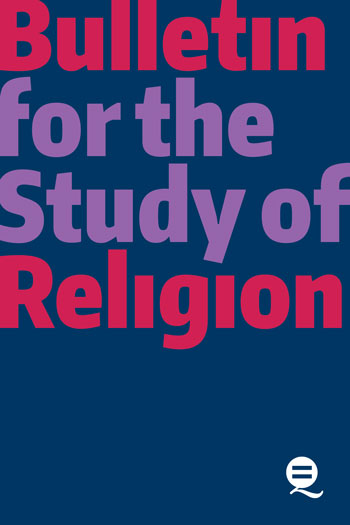Theories of Religion (1966-2022)
A Critical Primer
Michael Stausberg [+–]
University of Bergen
This volume does not focus on “theory” in a broad sense, but specifically on theories of religion. Theories of religion are texts that seek to interpret or explain “religion”, attempting to account for its meaning of “religion”, its specificity and its ontological status. They typically discuss the origins, structure, and functions (or products) of “religion”. Hence, theories of religion differ from “theoretical approaches”, “theoretical frameworks”, “theoretical models”, “definition of religion”, “ideas”, or similar concepts.
The volume explores “theories of religion” as a fundamental concept in the study of religion/s in a specific, albeit interdisciplinary sense. Notably, many of the key theorists of religion are anthropologists, cognitive and evolutionary theorists, philosophers, and sociologists, in addition to scholars of religion in a more disciplinary sense. The book starts by giving a brief synopsis of theories of religions advanced since 1966. This starting point is chosen because of the appearance of two theoretical manifestos–contemporary classics–by Clifford Geertz, and Peter Berger and Thomas Luckmann, which have set the stage for subsequent theories of religion as points of references.
The main part of the volume surveys some 40 works by the following theorists in chronological order: Clifford Geertz, Thomas Luckmann, Peter Berger, Pierre Bourdieu, Niklas Luhmann, Donald Crosby, Andrew Greeley, Ninian Smart, Martin Prozesky, Rodney Stark (with William Sims Bainbridge and Roger Finke respectively), Felicitas Goodman, John Hick, E. Thomas Lawson and Robert McCauley, Stewart Guthrie, Danièle Hervieu-Léger, Henri Hatzfeld, Jacques Derrida, Walter Burkert, Roy Rappaport, Pascal Boyer, Scott Atran, David Sloan Wilson, Lee Kirkpatrick, Loyal Rue, Daniel Dennett, Thomas Tweed, Martin Riesebrodt, Peter Sloterdijk, Robert Bellah, Gavin Flood, Jeppe Sinding Jensen, Ronald Dworkin, Jan-Ove Henriksen, Christian Smith, Paul-Francois Tremlett, Jonathan Turner with Alexandra Maryanski, Anders Klostergaard Petersen, and Armin Geertz, Volkhard Krech, Gabriel Levy.
The book is written in clear and accessible language and will serve as a unique resource for students and scholars alike.







